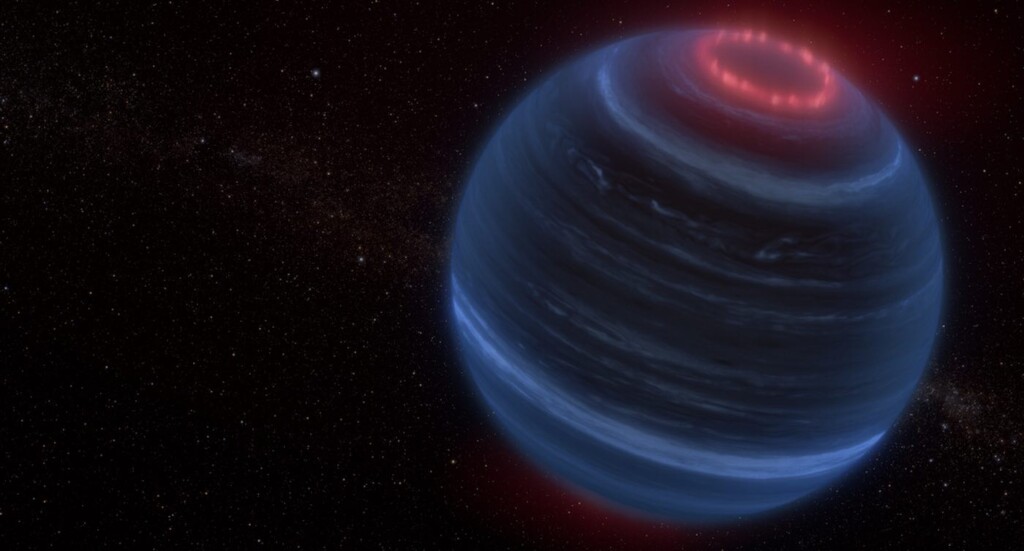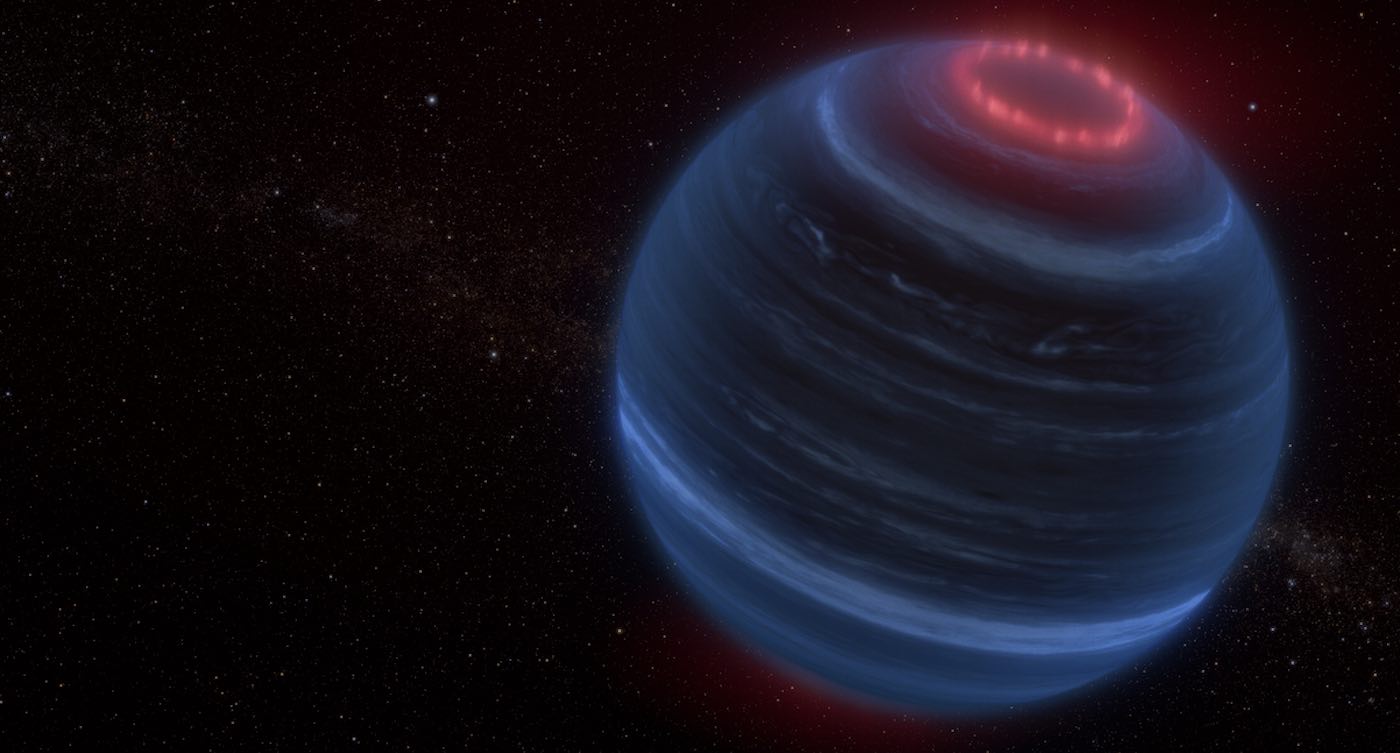
Everyone who’s given five seconds to look into it knows that the Aurora Borealis is cause by charged particles from the Sun interacting with the Earth’s magnetic field, but what if there were no Sun, could there still be an aurora?
That’s what astronomers using NASA’s James Webb Space Telescope seem to have observed after finding an object displaying what is probably an aurora like the familiar Northern Lights on our world.
The object in question is a brown dwarf, something larger than Jupiter but smaller than a star, known as W1935, and unlike any planets in our solar system that experience aurorae, it’s an isolated object in space with no nearby star to create one.
“This is an unexpected discovery because the brown dwarf is cold and lacks a host star; therefore, there is no obvious source of energy to heat its upper atmosphere and make the methane glow,” NASA writes.
The findings are being presented at the 243rd meeting of the American Astronomical Society in New Orleans this week.
To help explain the mystery of the infrared emission from methane, the team turned to our solar system.
“Methane in emission is a common feature in gas giants like Jupiter and Saturn. The upper-atmosphere heating that powers this emission is linked to aurorae.
On Earth, the energetic particles that create the Northern Lights cascade down into our atmosphere along magnetic field lines near Earth’s poles, colliding with gas molecules and creating eerie, dancing curtains of light.
Jupiter and Saturn have similar auroral processes that involve interacting with the solar wind, but they also get auroral contributions from nearby active moons like Io (for Jupiter) and Enceladus (for Saturn).
OTHER COSMIC MYSTERIES: Record-Breaking Fast Radio Burst from Space Alerts Astronomers to Fascinating Blob of Galaxies
NASA say that for isolated brown dwarfs like W1935, the absence of a stellar wind to contribute to the auroral process and explain the extra energy in the upper atmosphere required for the methane emission is “a mystery”.
A team led by Jackie Faherty, an astronomer at the American Museum of Natural History in New York, was awarded time with the Webb telescope to investigate 12 cold brown dwarfs. Among those were W1935—an object that was discovered by citizen scientist Dan Caselden.
MORE NEWS LIKE THIS: NASA Astronaut Thrilled by His ‘Absolutely Unreal’ Photo of Aurora From Space
The team surmises that either unaccounted internal processes like the atmospheric phenomena of Jupiter and Saturn, or external interactions with either interstellar plasma or a nearby active moon, may help account for the emission.
“With W1935, we now have a spectacular extension of a solar system phenomenon without any stellar irradiation to help in the explanation.” Faherty noted. “With Webb, we can really ‘open the hood’ on the chemistry and unpack how similar or different the auroral process may be beyond our solar system.”
SHARE This Discovery In Empty Space With Your Friends…




















